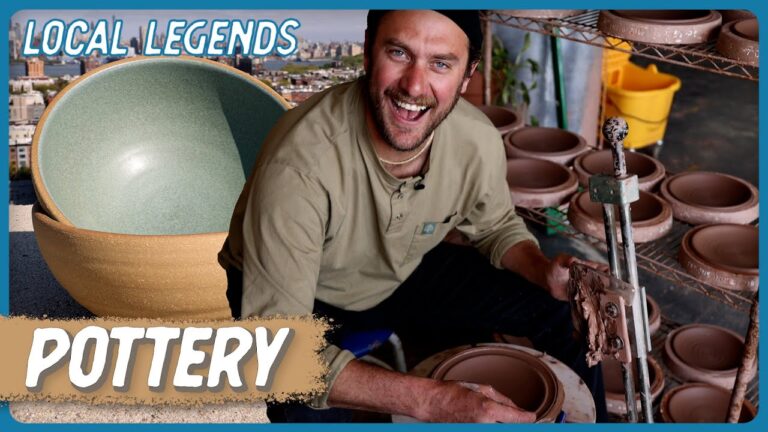Are you fascinated by the intricate designs and beautiful colors of ceramic art? Understanding the firing process is essential to appreciating the skill and dedication that goes into creating these stunning pieces. From the initial shaping of the clay to the final firing in the kiln, each step plays a crucial role in producing the finished work of art. In this article, we will dive into the fascinating world of ceramic firing, exploring the techniques and science behind this ancient and intricate process. Whether you’re a seasoned ceramic artist or simply an admirer of the craft, gaining a deeper understanding of firing will undoubtedly enhance your appreciation for the art form.
What are the firing cycles for ceramics?
Ceramics firing cycles can vary depending on the type of firing being done. For a slow bisque firing, the temperature gradually increases at a rate of 80F/hr to 250F, then 200F/hr to 1000F, 100F/hr to 1100F, 180F/hr to 1695F, and finally 80F/hr to reach 1945F over a 13-hour period. Alternatively, a fast bisque firing achieves the same result in just 10 hours by increasing the rate of rise at each step.
When it comes to glaze firing, a slow 7-hour cone 04 firing follows a specific temperature schedule. It starts by heating up to 250F at a rate of 150F/hr, then increases to 1695F at 400F/hr, and finally reaches 1945F at a rate of 120F/hr. This carefully controlled process ensures that the ceramics are properly fired and ready for their intended use, whether it be for functional or decorative purposes.
Understanding the firing cycles for ceramics is crucial in achieving the desired results for your pottery or ceramic projects. Whether you opt for a slow bisque firing for a more controlled temperature increase or a fast bisque firing to save time, each step in the firing process plays a vital role in the final outcome. By following the recommended temperature schedules for both bisque and glaze firings, you can ensure that your ceramics are properly fired and ready to be showcased or used in your creations.
What steps are involved in the ceramic process?
The ceramic process begins with the procurement of raw materials, which are then refined and mixed to create the desired composition. The next steps involve shaping the ceramic material, drying it, and subjecting it to high temperatures in a kiln for firing. The final stages include glazing the ceramic and adding any finishing touches before packaging the finished product. These steps are essential for creating high-quality ceramic goods that are both functional and aesthetically pleasing.
Is ceramics fired twice?
Yes, firing ceramics twice is a common practice in the ceramic-making process. The first firing, also known as the bisque firing, is done to harden the clay and remove any impurities, making it ready for glazing. The second firing, known as the glaze firing, is done to melt and fuse the glaze onto the ceramic piece, giving it a glossy finish and making it waterproof. This two-step firing process ensures that the ceramics are both durable and aesthetically pleasing.
Mastering the Kiln: Essential Tips and Techniques
Are you looking to take your pottery skills to the next level? Mastering the kiln is essential for achieving the perfect finish on your creations. With the right tips and techniques, you can ensure that your pottery is fired to perfection every time. From understanding different firing schedules to proper kiln loading, mastering the kiln will elevate your craft to new heights.
To become a kiln master, it is crucial to familiarize yourself with the various types of kilns and their capabilities. Experimenting with different temperatures, glazes, and firing methods will help you understand how to achieve the desired results. By honing your skills and knowledge of kiln operation, you can unlock endless possibilities for creating stunning pottery pieces. Don’t miss out on these essential tips and techniques to enhance your pottery skills and become a true kiln master.
Fired Up: A Beginner’s Guide to Ceramic Firing
Looking to dive into the world of ceramic firing? Fired Up: A Beginner’s Guide to Ceramic Firing is your go-to resource for mastering the art of firing clay. From understanding the different types of kilns to learning the best firing techniques, this guide will walk you through the process step by step. Whether you’re a novice or a seasoned potter, this concise and informative guide will help you unleash your creativity and take your ceramic creations to the next level. So get ready to ignite your passion for pottery and start firing up your artistic journey today!
In mastering the intricate firing process for ceramic art, artists are able to transform their creations into durable and visually stunning pieces. By carefully controlling factors such as temperature, atmosphere, and cooling rates, artists can achieve a wide range of effects, from vibrant glazes to delicate crystalline formations. Through experimentation and experience, artists can develop a deep understanding of how to harness the power of the kiln to bring their artistic visions to life.



